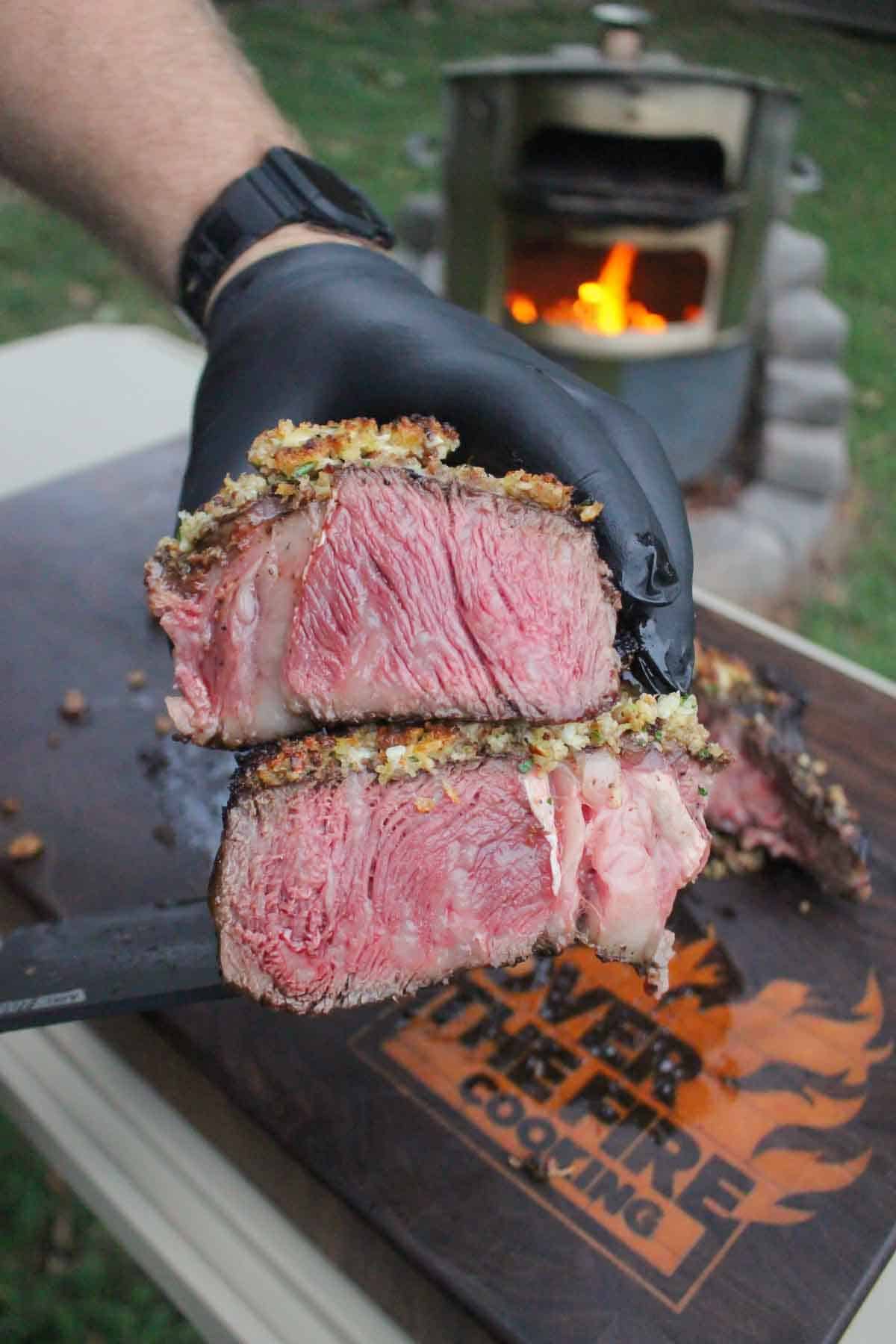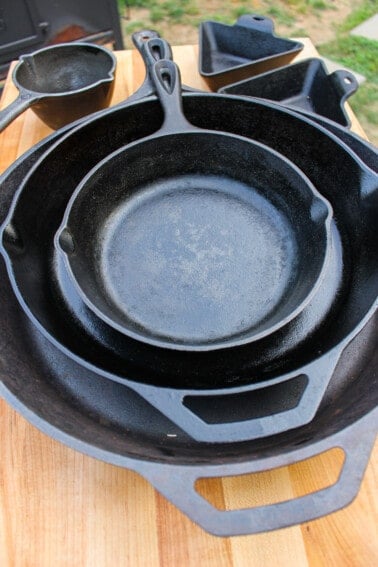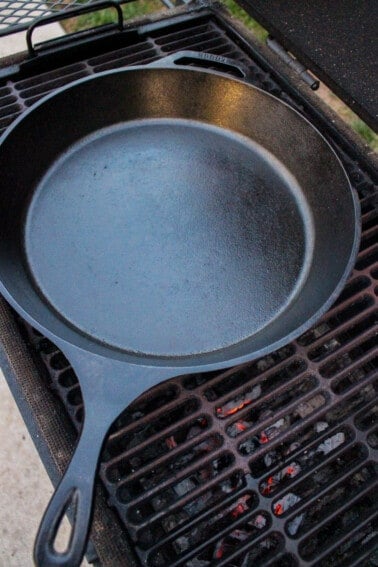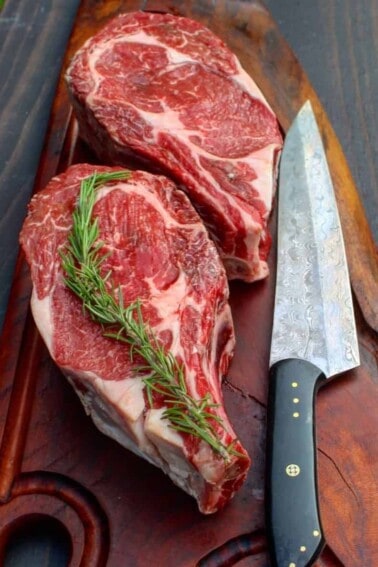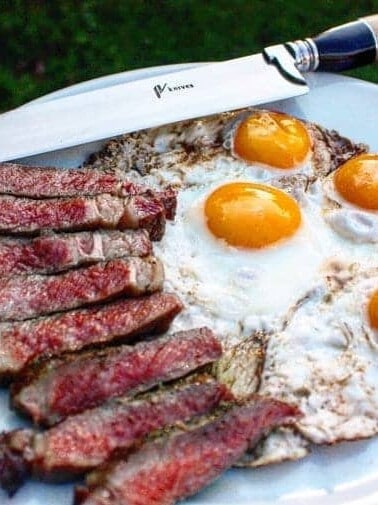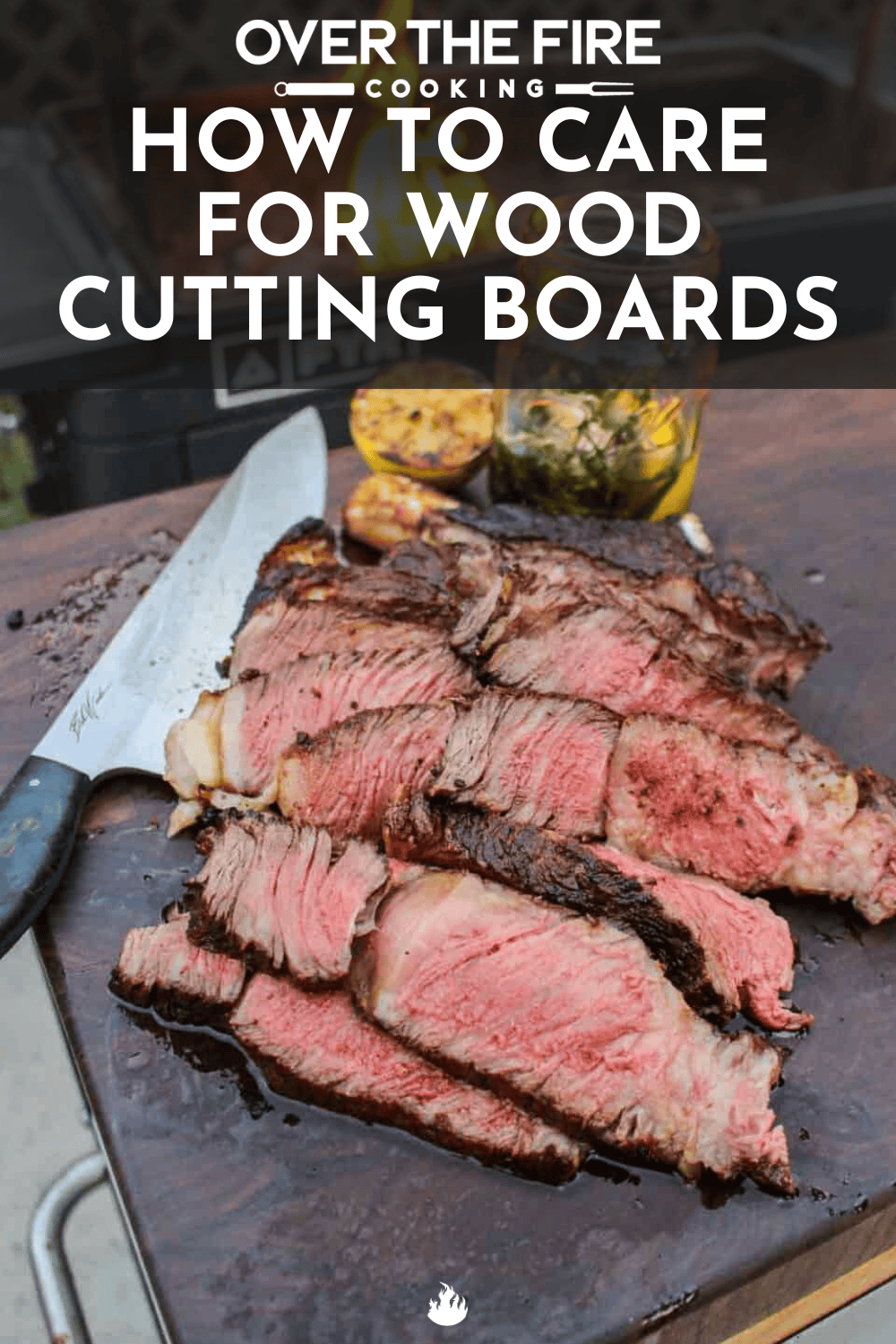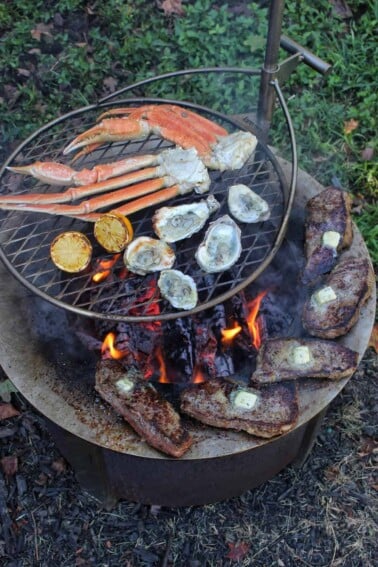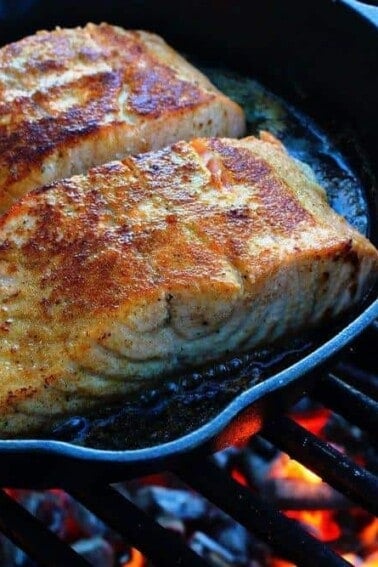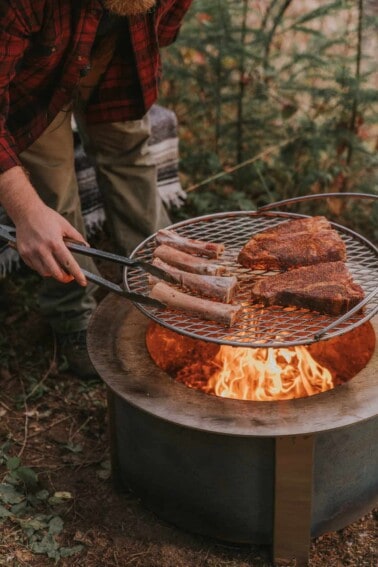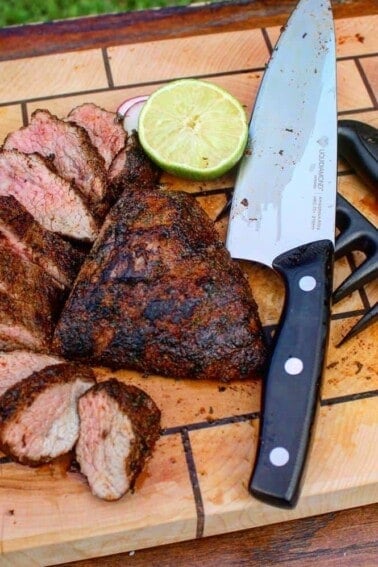How to care for wood cutting boards may not seem like a thrilling topic, but it’s truly an important one if you own a beautiful wooden cutting board. If you’re anything like me, your cutting board gets some serious action. From prepping raw meat for the grill to serving epic charcuterie boards, it’s easily one of the most used tools in the kitchen. I have a plethora of cutting boards (considering I use them everyday in my videos), so it’s imperative that they stay in tip top shape!
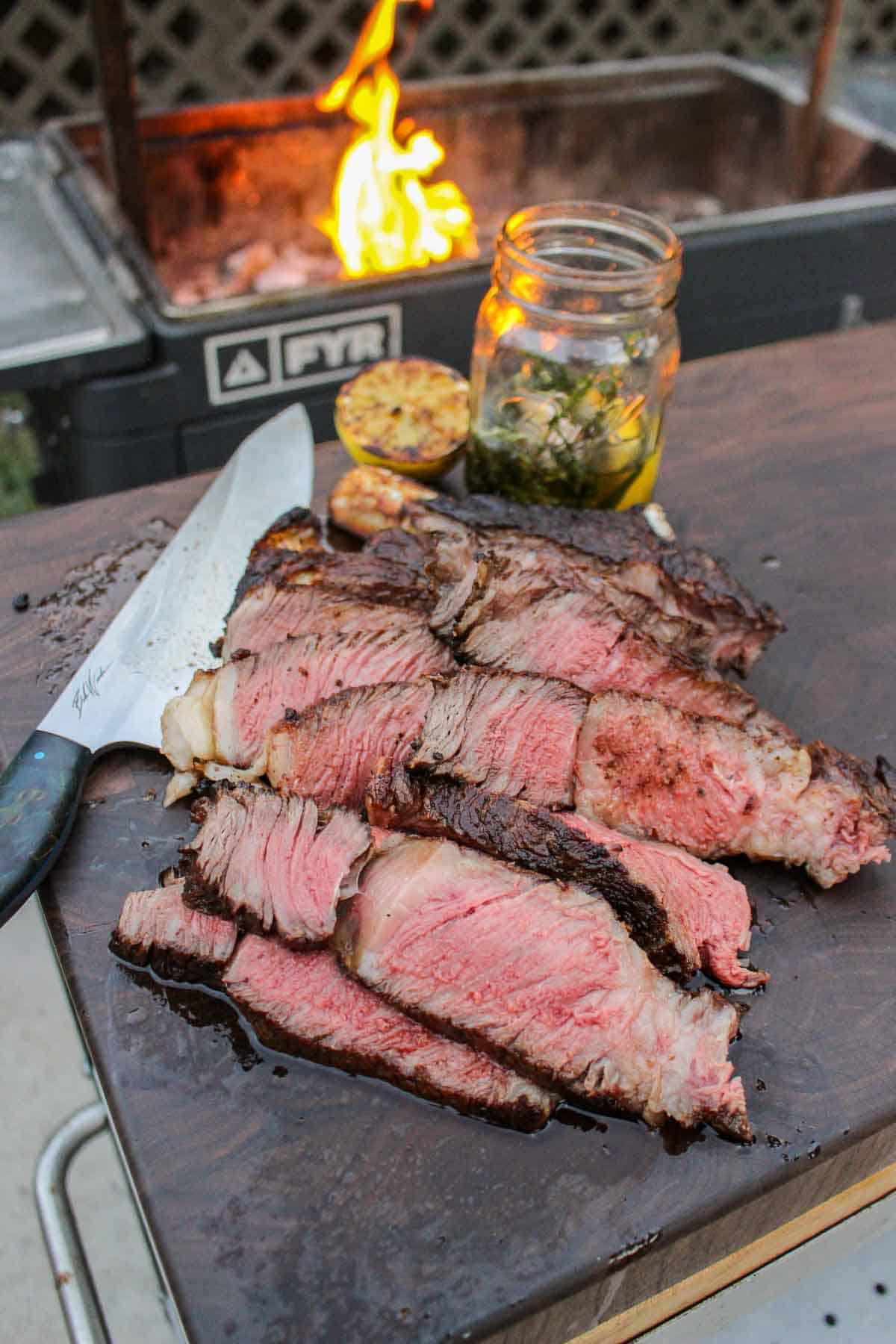
My wife and I have been rocking our current wooden cutting board (the one you see in my videos) for many years now. And, after four years of constant daily use, she’s still going strong. Want yours to last just as long? Let me show you how.
Why You’ll Love a Wood Cutting Board
When it comes to serious cooking, especially over the open fire, choosing the right cutting board isn’t just about looks—it’s about performance and giving your food the respect it deserves. Sure, a plastic cutting board is cheap and easy to clean, but let me tell you: wood is king, my friends, and here’s why.
Tough & Gentle
First up, wood boards are tougher and gentler at the same time. A solid wood cutting board won’t dull your knife blades nearly as fast as plastic. Trust me, keeping that razor-sharp edge intact means better slices, smoother food preparation, and a happier cook—especially after you’ve just spent good money on that perfect chef’s knife or cleaver. No matter which board you choose, you will eventually have to sharpen your knives, but the wood grain is much kinder to your blades.
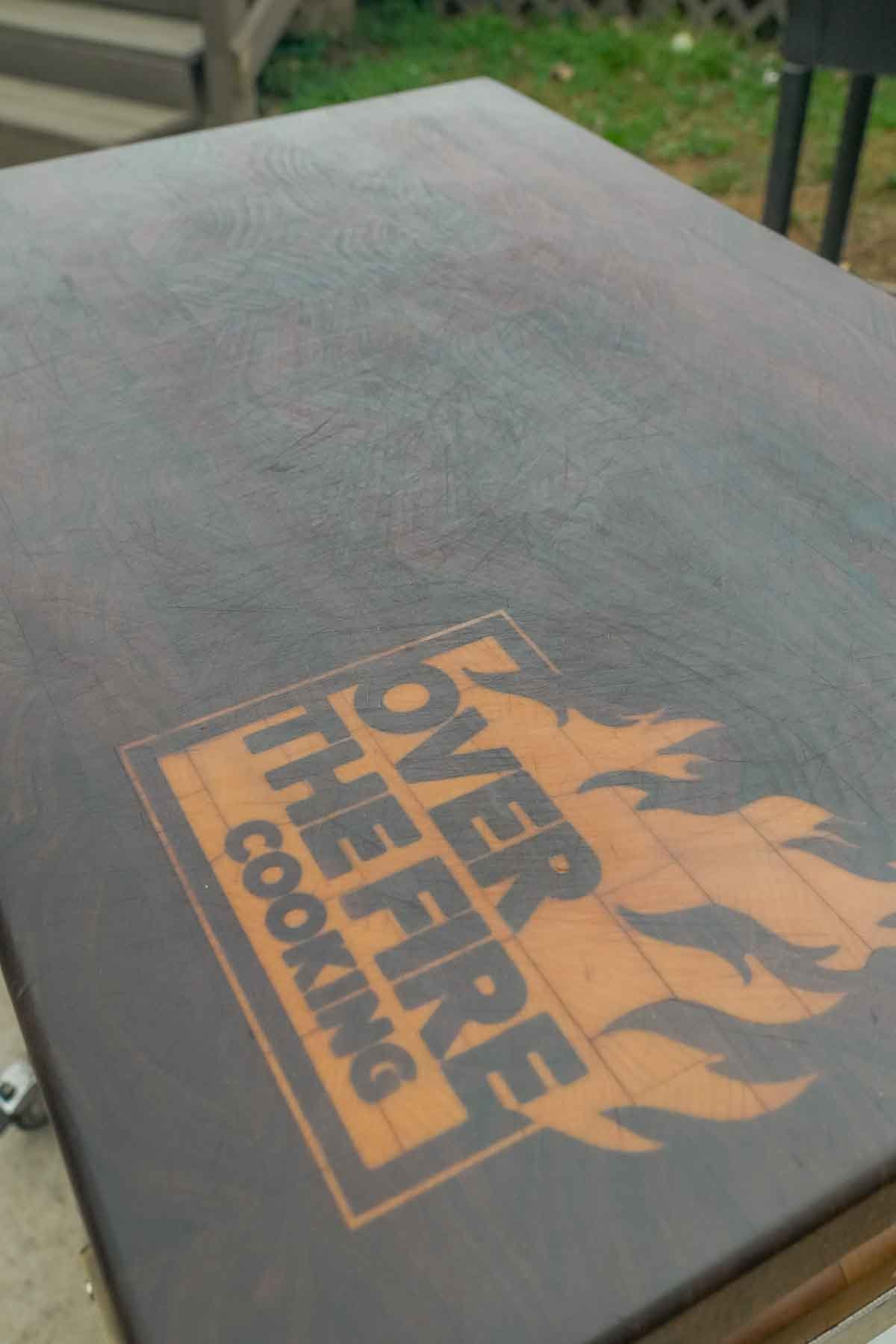
Clean!
Next, let’s talk about flavor and hygiene. Wood naturally fights bacteria, absorbing moisture away from the surface and helping reduce nasty microbes that can linger on plastic. Have you ever noticed how plastic cutting boards start retaining knife cuts with all the slices that happen on top of them? Well, those can become breeding grounds for bacterial growth, especially since microscopic food residue can get trapped in there. All sounds gross, right?! While wooden cuttining boards will also show signs of the knife marks, they heal themselves much better. Especially when we hit that wood surface with some boos block oil! More on that later.
So, whether you’re slicing up juicy smoked brisket, prepping veggies for kabobs, or carving into a freshly seared ribeye, wooden boards are the best cutting boards to keep things clean without sacrificing flavor.

Style Factor
And then there’s the style factor—because let’s face it, presentation matters. A quality wood cutting board not only makes prep work easier, it also doubles as the perfect serving platter because of their natural beauty. Imagine sliding a freshly sliced flank steak or grilled tri-tip onto a beautifully seasoned board, garnished with herbs and roasted veggies—instant feast mode achieved.
They last!
Finally, longevity. Treat your wooden cutting board right—clean it properly, oil it regularly, and it’ll become a trusty cooking companion for years. Plastic boards get cut up, stained, and warped fast, but your wooden board will age gracefully, developing character with every chop, slice, and dice.
Bottom line: choose wood, and you’ll be rewarded with better knives, better meals, and better stories around the fire.

How to Clean Cutting Boards (the Right Way)
Proper care for your cutting board isn’t just about looks—it’s crucial for food safety. Let’s break down the best cleaning methods:
- Daily Cleaning: For everyday use, use dish soap to wash your board with hot, soapy water. Make sure no food debris/food remnants get left behind. Rinse with warm water and wipe with a clean dish towel, clean paper towel, or other clean cloth. Make sure your board isn’t soaking wet—dry completely to avoid a warped board.
- Deep Cleaning: Got stubborn stains or strong odors? Sprinkle salt over the surface of your board, then scrub with lemon juice. Let it sit a few minutes, then rinse with hot water. White vinegar or hydrogen peroxide mixed with water can also tackle tough stains and disinfect the cutting board surface.
- Raw Meat Handling: After prepping raw meat, disinfect the board using a mild bleach solution or a part vinegar, part water solution. This kills nasty bacteria like E. coli and prevents food-borne illnesses. Rinse thoroughly afterward.

Conditioning Your Cutting Board
Wooden boards crave regular maintenance. Without proper care, wood fibers dry out and the surface of the wood becomes vulnerable. Every month or two, giveing your board an oil soak is always a good idea.
- Apply food-grade mineral oil or specialized board oil generously. I’m talking to the entire surface of the board and the sides of the board. If you’re in a pinch, coconut oil can also help.
- Let the board absorb enough oil—usually overnight.
- Remove excess oil with a clean towel.

This will ensure your heavily used boards stay in good condition. The oil forms a protective layer on the smooth surface of the boards. John Boos & Co. Mystery Oil and Board Cream is my absolute go-to for getting the job done. The cream contains mineral oil and carnauba wax, creating a protective barrier that repels water and prevents cracking. Grab some here.
If you recently received a new board, it’s also a good idea to go ahead and condition it before using (if it did come preseason).
What Oils Not to Use
Avoid cooking oil like vegetable oil and olive oil—they can turn rancid and spoil your board. Since wooden cutting boards are a natural product, I like to also stick to natural oils, (specifically made for wood boards, often found at hardware stores or online).
Final Pro Tips for Wood Cutting Board Care
- Store your board upright to dry thoroughly.
- Avoid extreme high temperature or long periods of time in moisture.
- Use steel brushes sparingly—they’re way too aggressive for regular use, but great for occasional deep grooves.
- Don’t ever place it in the dishwasher!
Now you know how to care for wood cutting boards. Just follow these simple, practical methods, to take good care of those boards! By doing so, you’ll extend the life of your board. Keep slicing, grilling, and eating epic meals. Cheers!

More How to’s
FAQs for Cutting Board Care
Great question! For frequent grill masters, serious wood cutting board care should happen once every 2-4 weeks. But honestly, it depends on how often you’re firing up the grill and slicing away. If you notice your board looking a little dry or dull, that’s your cue to break out the mineral oil or wood conditioner. A quick rub-down keeps it healthy and ready for action.
Hands down, some of my absolute favorite boards come from brands like John Boos, Brooklyn Butcher Blocks, and Sonder LA. These craftsmen use top-notch hardwoods like walnut, cherry, and maple, creating super durable and stunning boards built to handle heavy-duty prep work. But don’t sleep on smaller makers either—check out local woodworkers on Etsy or Instagram for some truly unique, grill-worthy boards.
They’re cool, no doubt—especially if you’re working with limited counter space. The oversized stove-top boards give you room to spread out, prep bigger meals, and make your kitchen feel like a legit chef’s workstation. Just remember: they’re usually thinner and less durable than traditional chopping blocks, so I’d recommend keeping one around for convenience but still relying on your trusty, thicker board for daily grill prep.

Get The Cookbooks!
Flavor X Fire & FOOD X Fire
All the major tastes—salty, sour, sweet, bitter, and umami—are explored in depth, along with an investigation of other components you should consider when it comes to flavor, such as aroma, heat, and texture.
